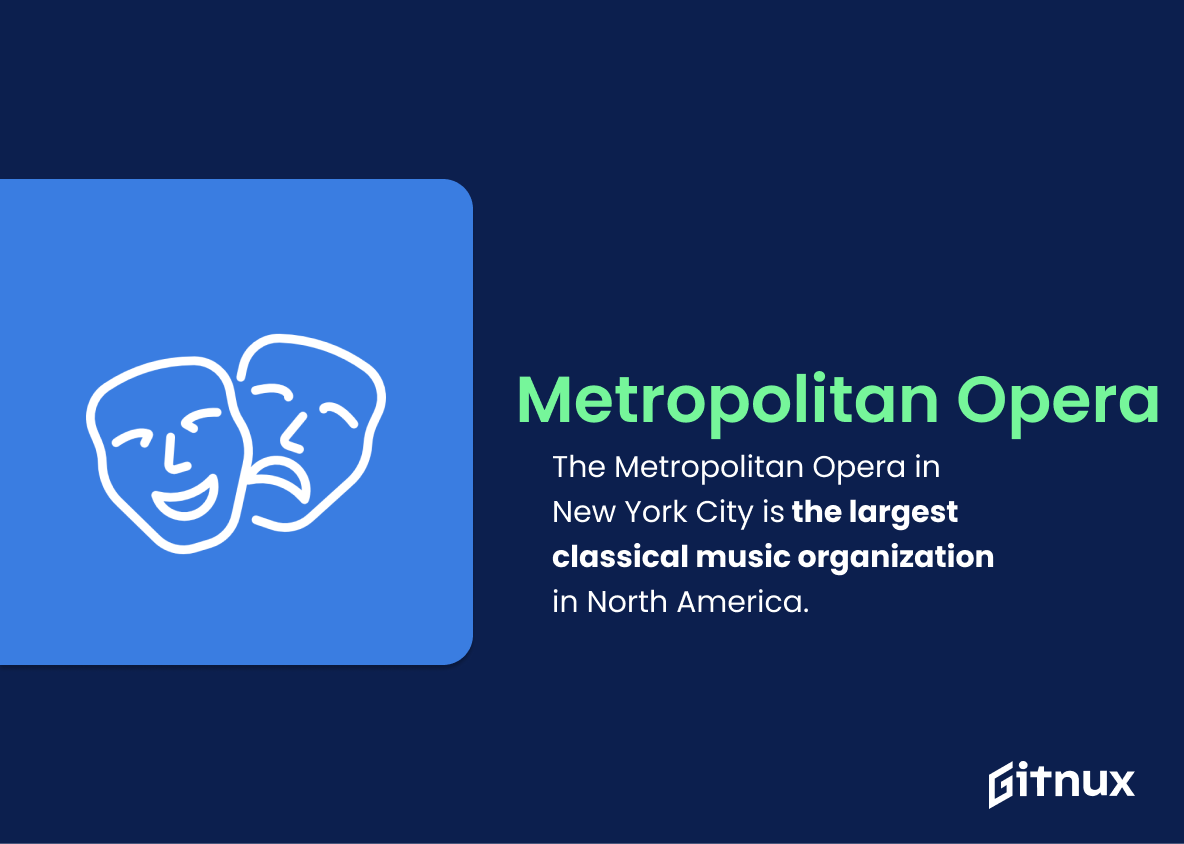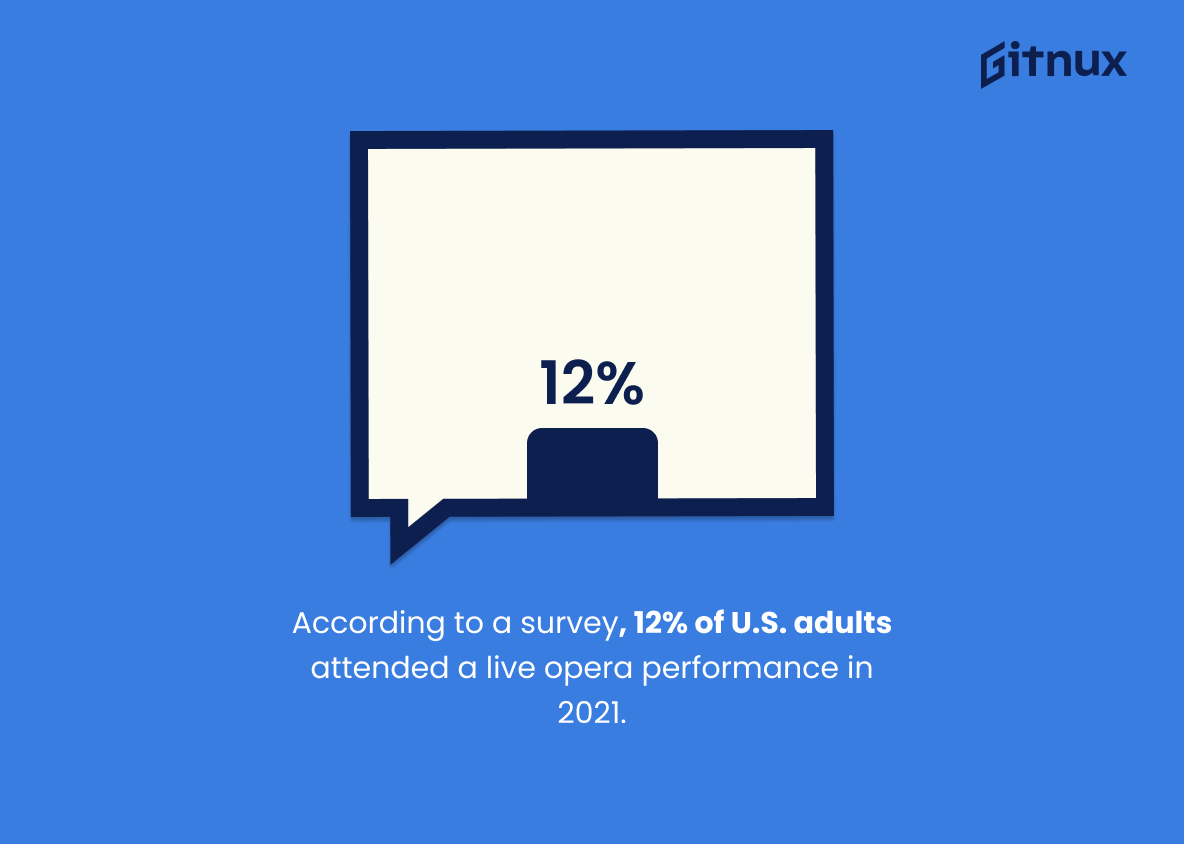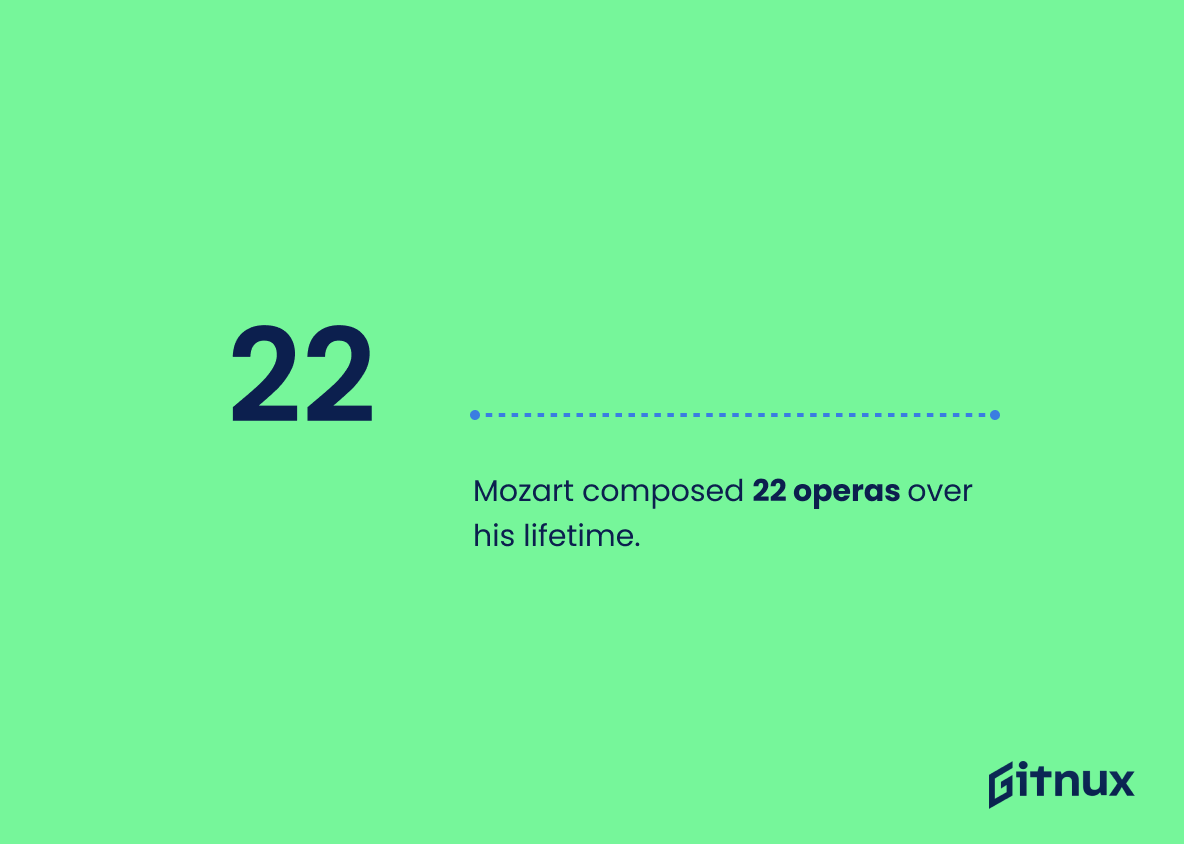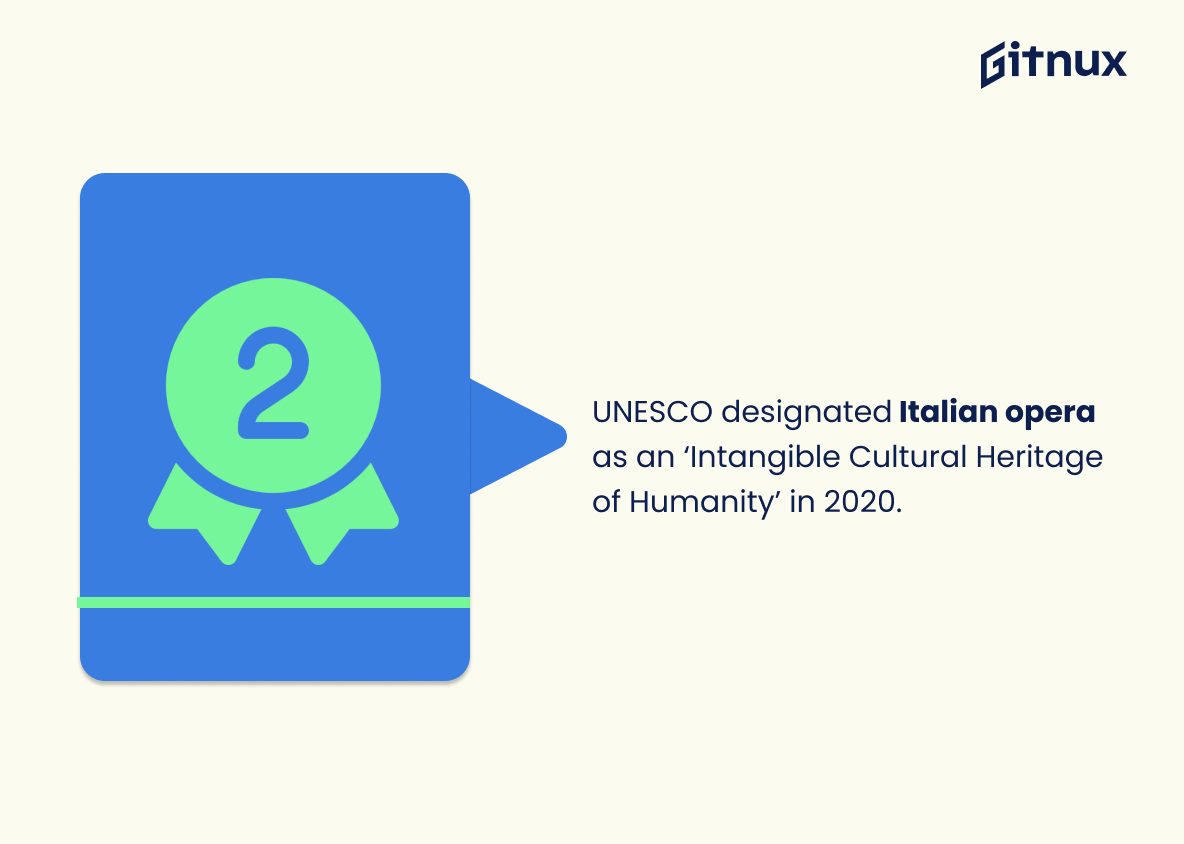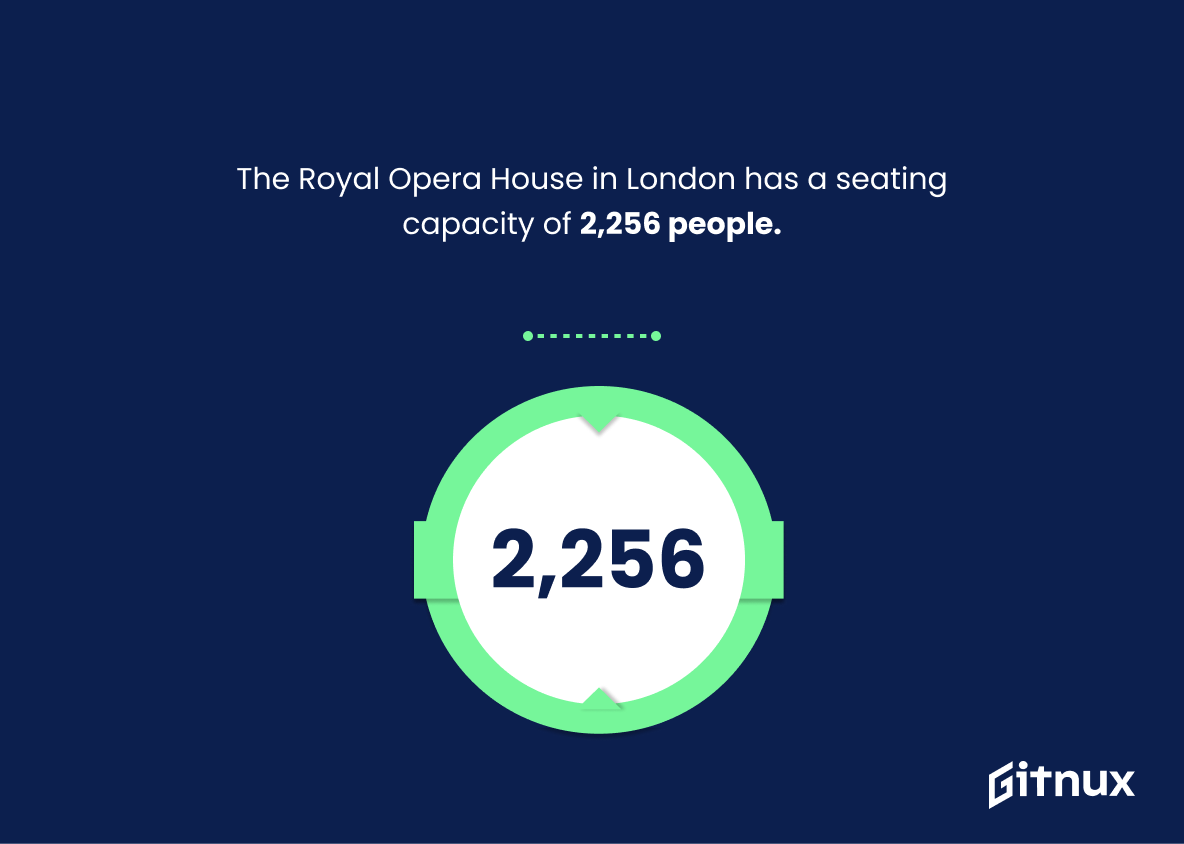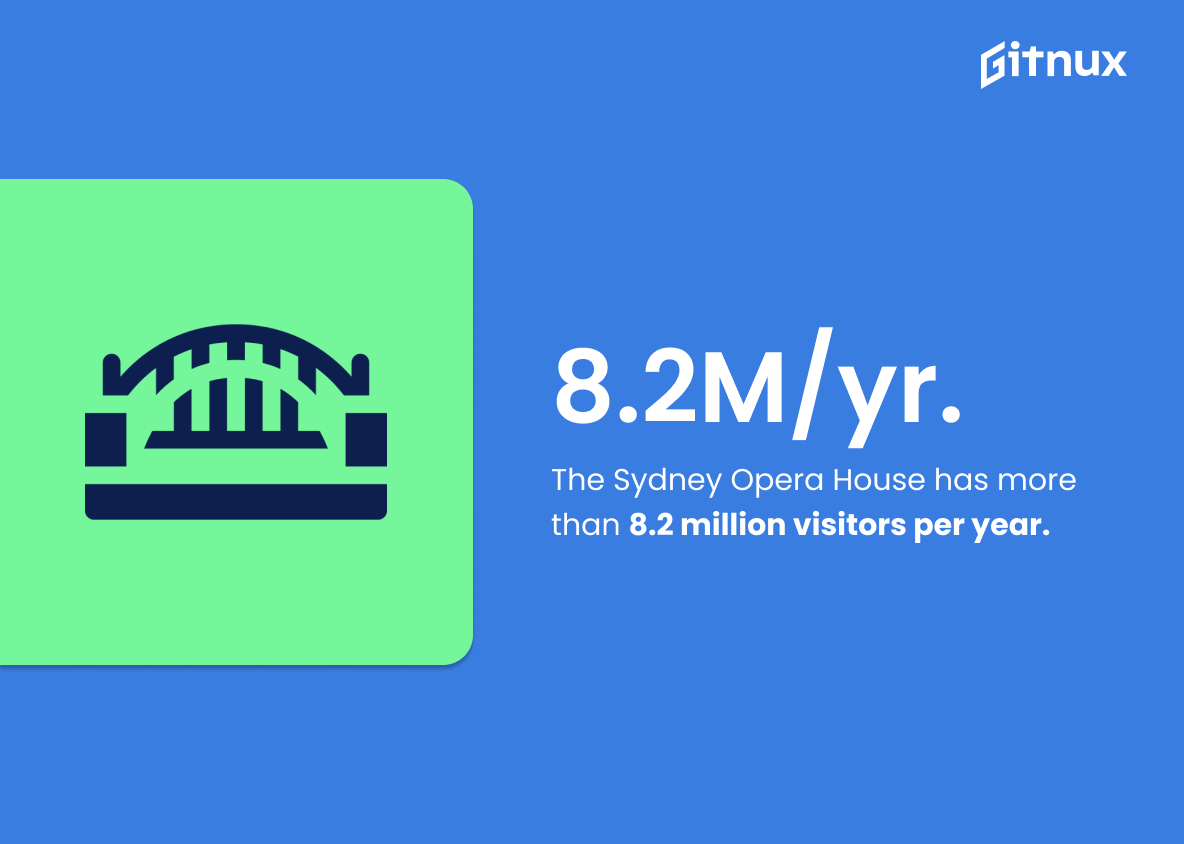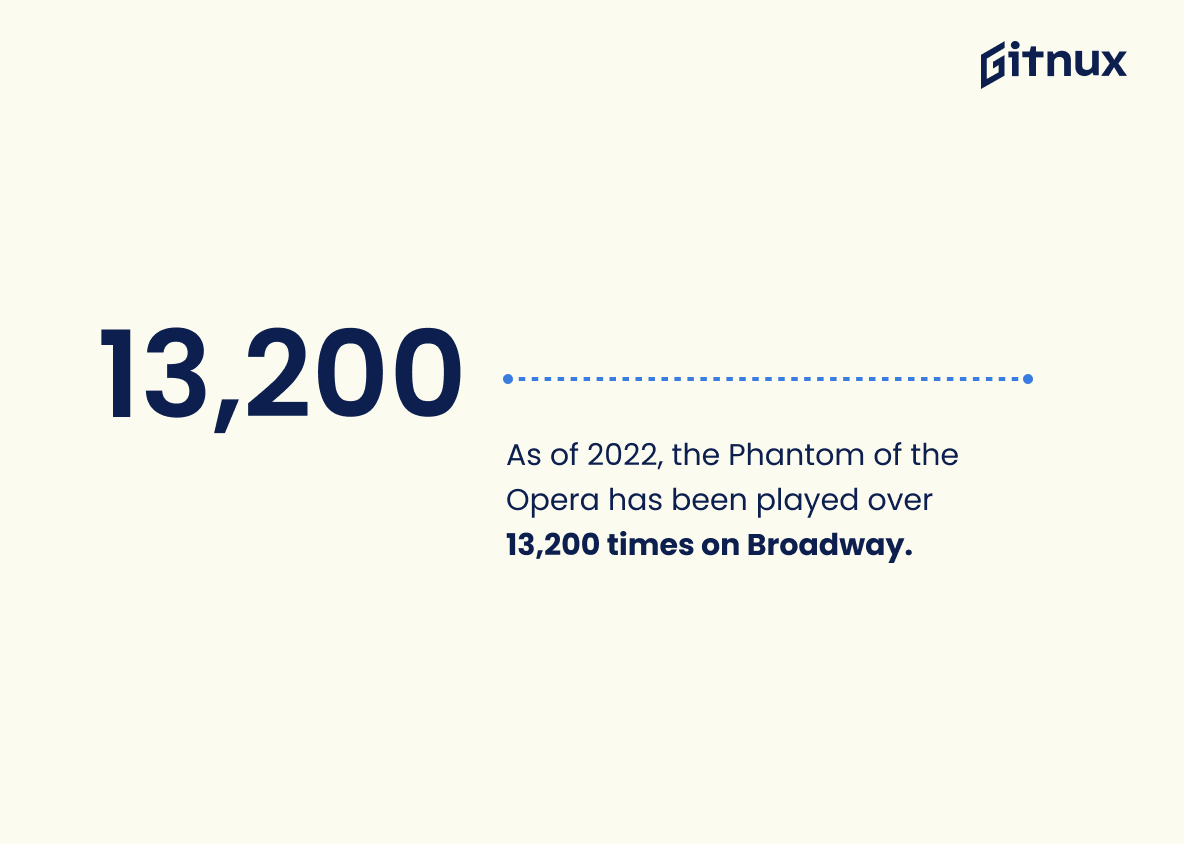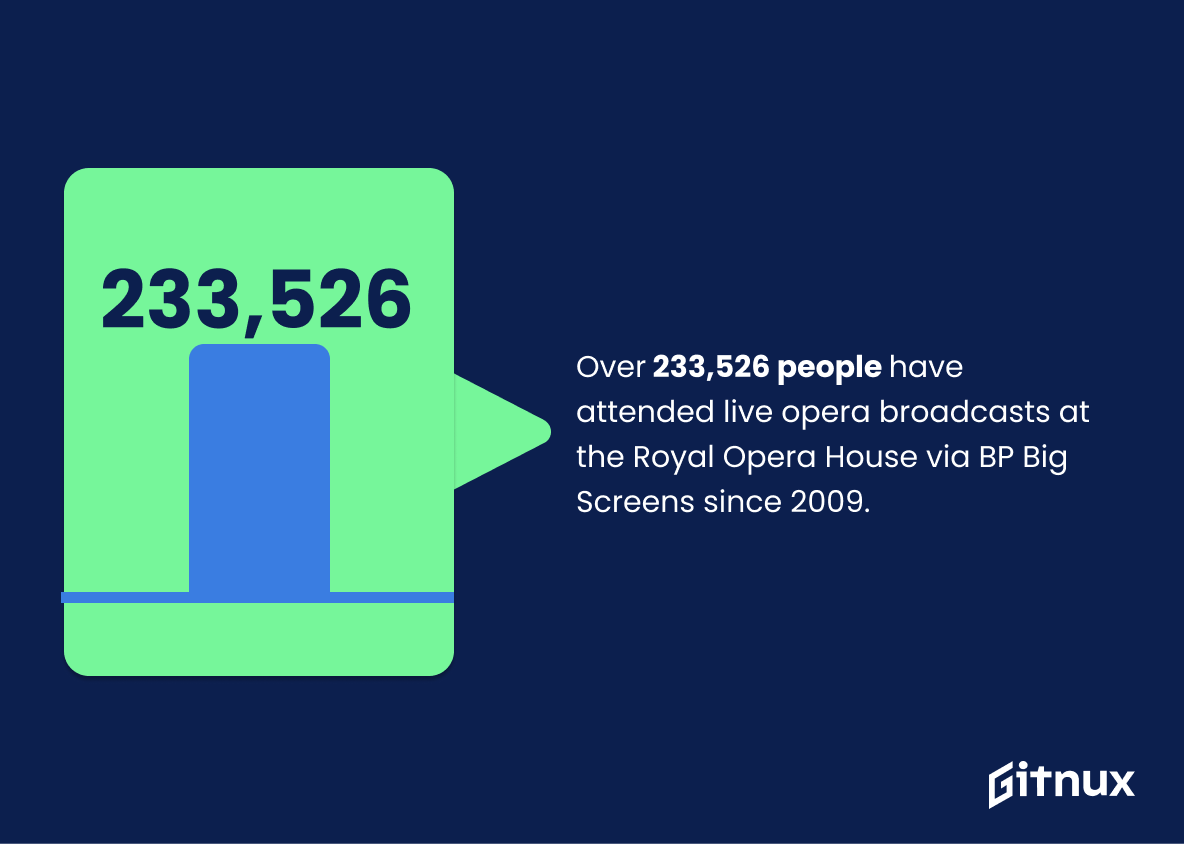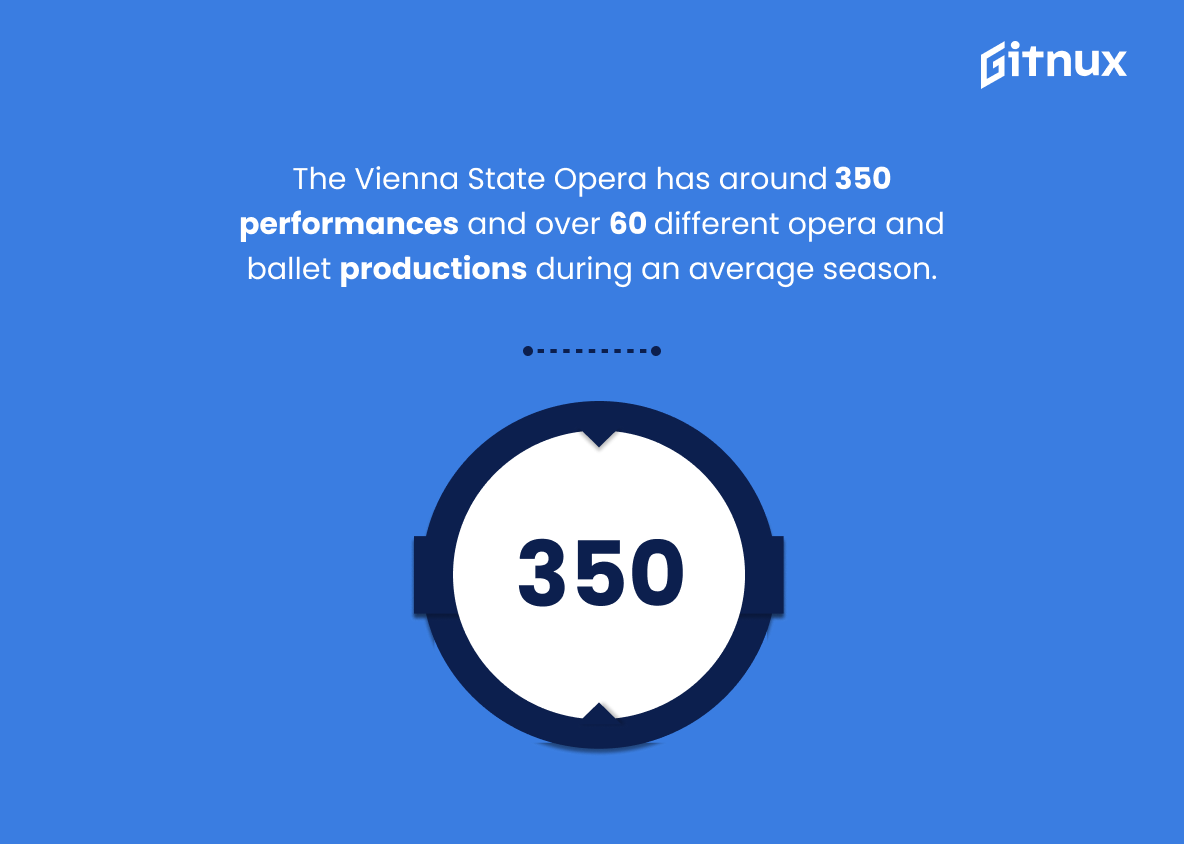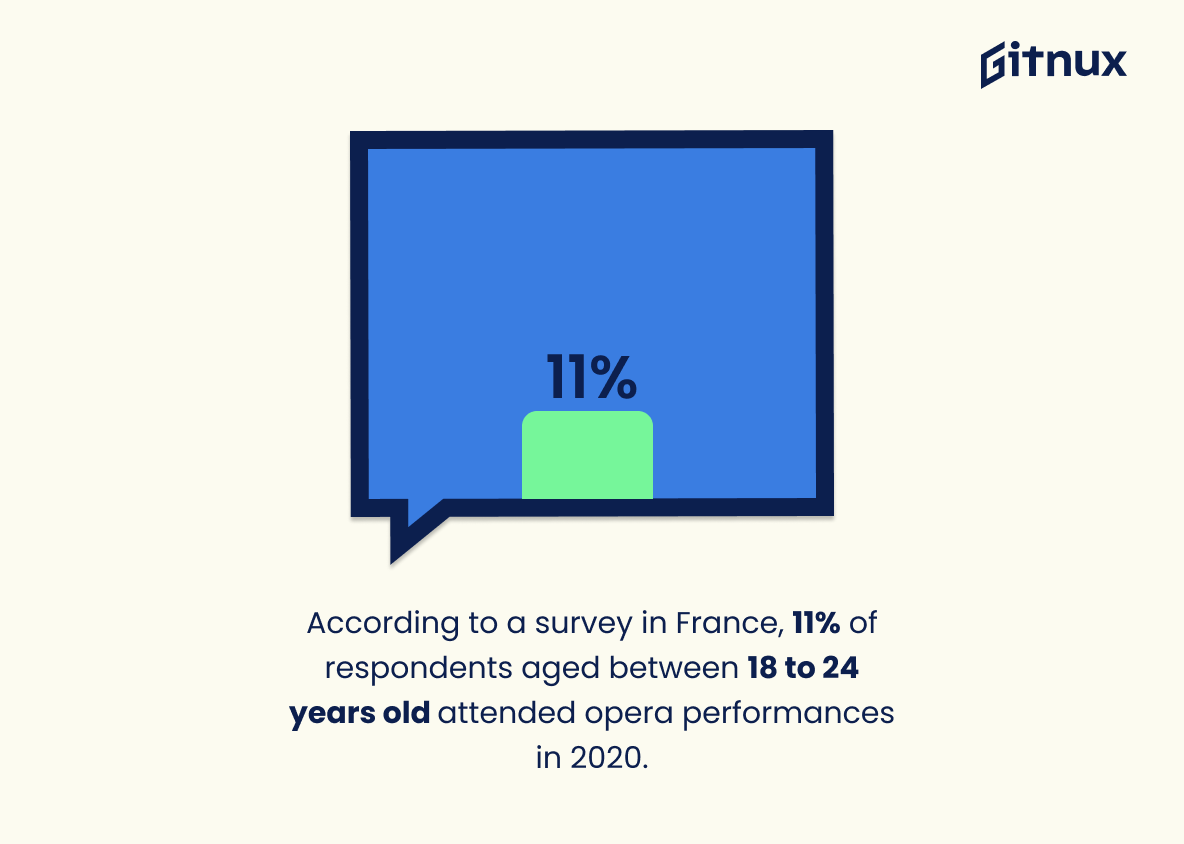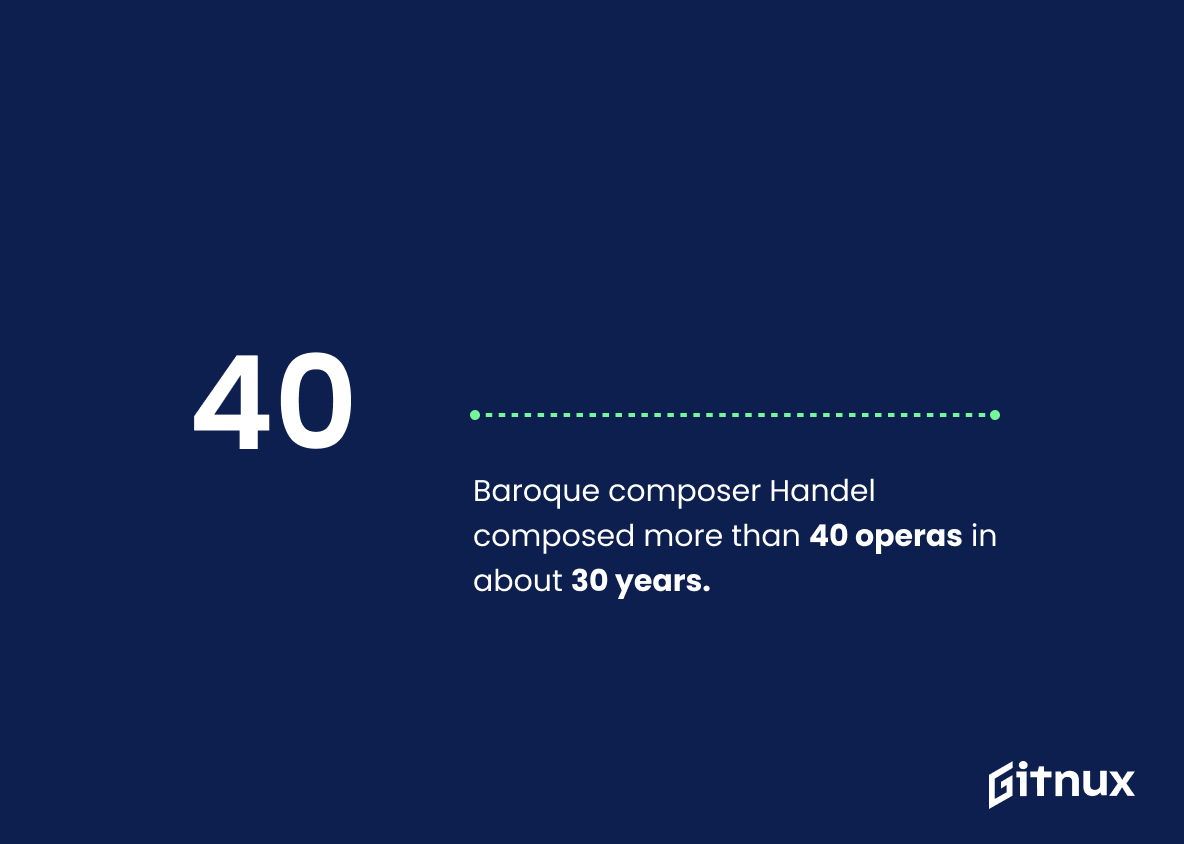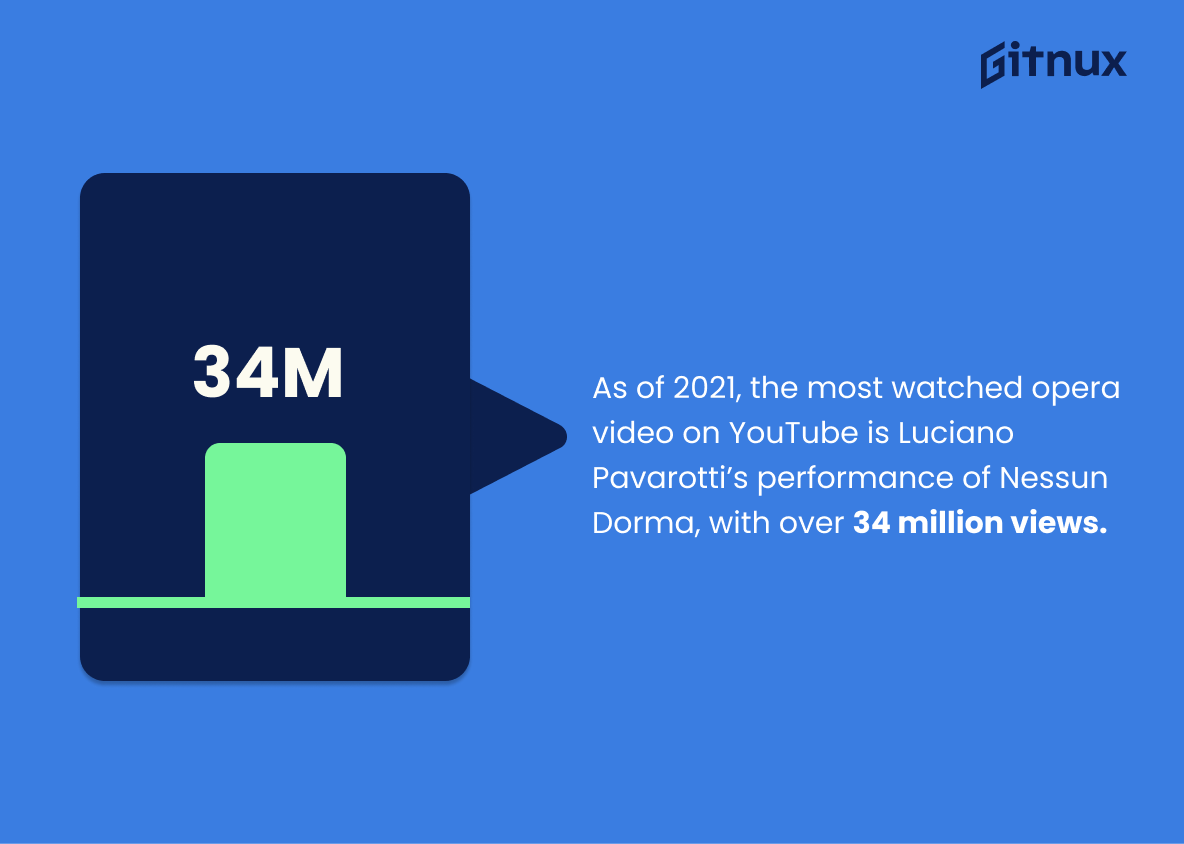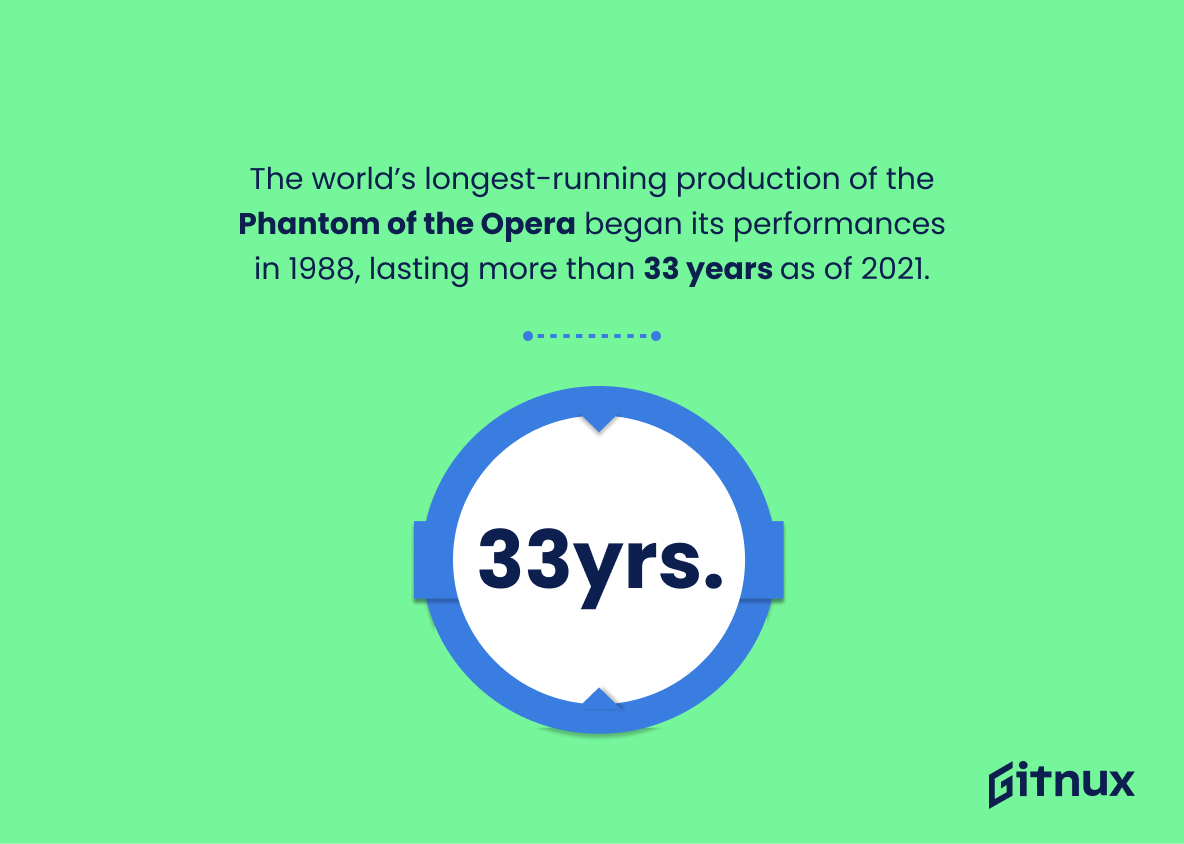Opera is a beloved art form that has been around for centuries. From the world’s oldest operating opera house, The Helsingør Theater in Denmark built in 1764 to Luciano Pavarotti’s performance of Nessun Dorma with over 34 million views on YouTube, it is clear that opera continues to captivate audiences all over the world. In this blog post we will explore some interesting statistics about Opera from its global popularity as a web browser to attendance at live performances and more.
This statistic is significant in the context of a blog post about Opera Statistics as it provides a clear indication of the browser’s popularity. It shows that Opera is a major player in the web browser market, with a significant market share. This information can be used to inform decisions about which browser to use, as well as to compare Opera’s performance to other browsers.
The estimated total number of operas ever performed is over 25,000.
This statistic is a testament to the enduring popularity of opera throughout the centuries. It speaks to the fact that opera has been a beloved art form for generations, and that it continues to captivate audiences around the world. It is a reminder of the power of opera to move and inspire people, and of its lasting impact on culture and society.
Opera Statistics Overview
The Metropolitan Opera in New York City is the largest classical music organization in North America.
This statistic is significant in the context of a blog post about Opera Statistics because it highlights the immense impact the Metropolitan Opera has had on the classical music scene in North America. It serves as a testament to the organization’s success and influence, and is a reminder of the importance of opera in the cultural landscape.
According to a survey, 12% of U.S. adults attended a live opera performance in 2021.
This statistic is a telling indication of the current state of opera in the United States. It shows that despite the challenges of the pandemic, a significant portion of the population still managed to attend a live opera performance in 2021. This is a testament to the enduring popularity of opera and its ability to captivate audiences even in difficult times.
Mozart composed 22 operas over his lifetime.
This statistic is a testament to the sheer genius of Mozart and his immense contribution to the world of opera. It serves as a reminder of the immense talent and creativity of one of the greatest composers of all time, and the lasting legacy he has left behind.
UNESCO designated Italian opera as an ‘Intangible Cultural Heritage of Humanity’ in 2020.
This statistic is a testament to the significance of Italian opera in the world of music. It highlights the importance of opera in the cultural landscape and serves as a reminder of its timelessness and universality. It is a reminder that opera is not just a form of entertainment, but a form of art that has been appreciated and celebrated for centuries. This recognition by UNESCO is a powerful reminder of the impact opera has had on the world and its people.
The Royal Opera House in London has a seating capacity of 2,256 people.
This statistic is significant in the context of Opera Statistics as it provides a tangible measure of the size and scope of the Royal Opera House in London. It gives an indication of the potential audience size for any given performance, and thus the potential reach of the art form. Furthermore, it serves as a benchmark for comparison with other opera houses around the world.
The Sydney Opera House has more than 8.2 million visitors per year.
This statistic is a testament to the immense popularity of the Sydney Opera House, demonstrating that it is one of the most visited attractions in the world. It is a powerful indicator of the impact the Opera House has had on the cultural landscape, and its significance in the world of opera.
A typical opera performance can last anywhere from 1 to 5 hours.
The fact that opera performances can range from 1 to 5 hours is an important detail to consider when discussing opera statistics. It provides insight into the length of time that audiences are expected to commit to a single performance, and can help to inform decisions about ticket prices, scheduling, and other factors.
As of 2022, the Phantom of the Opera has been played over 13,200 times on Broadway.
This statistic is a testament to the enduring popularity of the Phantom of the Opera on Broadway. It speaks to the show’s ability to captivate audiences over the years, and its staying power in the theater world. It is a remarkable achievement that the Phantom of the Opera has been performed over 13,200 times on Broadway, and it is a testament to the show’s success and longevity.
Over 233,526 people have attended live opera broadcasts at the Royal Opera House via BP Big Screens since 2009.
This statistic is a testament to the enduring popularity of opera, with over 233,526 people having attended live opera broadcasts at the Royal Opera House via BP Big Screens since 2009. It is a clear indication that opera is still a beloved art form, with a large and dedicated audience. This statistic is a powerful reminder of the impact opera has had on people’s lives, and the importance of preserving and promoting this art form.
The Vienna State Opera has around 350 performances and over 60 different opera and ballet productions during an average season.
This statistic is a testament to the Vienna State Opera’s commitment to providing a wide variety of performances and productions for its patrons. With over 350 performances and 60 different opera and ballet productions, the Vienna State Opera is clearly dedicated to providing a diverse and entertaining experience for its audience. This statistic is a great example of the Vienna State Opera’s dedication to the art of opera and ballet.
Opera Seria, a type of opera, dominated the 18th-century European opera scene.
This statistic is a crucial piece of information when it comes to understanding the history of opera. It provides insight into the prevalence of Opera Seria during the 18th century, and how it shaped the European opera scene. By understanding this statistic, we can gain a better appreciation of the evolution of opera and its impact on the culture of the time.
According to a survey in France, 11% of respondents aged between 18 to 24 years old attended opera performances in 2020.
This statistic is significant in the context of opera statistics as it provides insight into the attendance of opera performances among the 18 to 24 year old demographic. It is important to understand the attendance of this age group as they are the future of the opera industry and their attendance can be indicative of the future of the art form.
Baroque composer Handel composed more than 40 operas in about 30 years.
The sheer magnitude of Handel’s operatic output is a testament to his genius and dedication to the art form. His prolificacy in the genre is a remarkable feat, and serves as an inspiring reminder of the heights that can be achieved with hard work and passion.
As of 2021, the most watched opera video on YouTube is Luciano Pavarotti’s performance of Nessun Dorma, with over 34 million views.
This statistic is a testament to the enduring popularity of opera, particularly Luciano Pavarotti’s performance of Nessun Dorma. With over 34 million views, it is clear that opera is still a beloved art form, and that Pavarotti’s performance is one of the most beloved pieces of opera in the world. This statistic is a powerful reminder of the timelessness of opera and its ability to captivate audiences of all ages.
The world’s longest-running production of the Phantom of the Opera began its performances in 1988, lasting more than 33 years as of 2021.
This statistic is a testament to the enduring popularity of the Phantom of the Opera, having been performed for over 33 years. It speaks to the timelessness of the story and its ability to captivate audiences for generations. This is an impressive feat and a great example of the staying power of opera.
Conclusion
Opera is a timeless art form that has been around for centuries. From the world’s oldest operating opera house in Denmark to the modern-day performances of Luciano Pavarotti, it continues to captivate audiences all over the world. Opera houses such as La Scala and The Metropolitan Opera are some of the most iconic venues in classical music, while Beijing Opera has been performing for more than 200 years.
With an estimated 25,000 operas ever performed and 12% of U.S adults attending live opera performances last year according to surveys, there is no doubt that this genre will continue its legacy into future generations.
References
0. – https://www.www.allmusic.com
1. – https://www.www.classicfm.com
2. – https://www.hyperallergic.com
3. – https://www.www.playbill.com
4. – https://www.www.youtube.com
5. – https://www.www.hdopera.com
6. – https://www.ich.unesco.org
7. – https://www.www.baroquemusic.org
8. – https://www.www.metopera.org
9. – https://www.www.wiener-staatsoper.at
10. – https://www.www.statista.com
11. – https://www.www.roh.org.uk
12. – https://www.gs.statcounter.com
13. – https://www.www.sydneyoperahouse.com
14. – https://www.www.britannica.com
15. – https://www.www.londontheatredirect.com
ZipDo, cited June 2023: Opera Statistics
